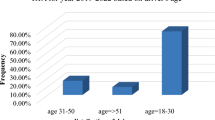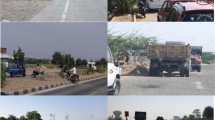Abstract
In the transportation sector in Turkey, approximately 90% of cargo and passenger transportation is carried out on highways. In recent years, increasing population and welfare levels have brought along an increase in demand for and intensity of highway use. Accidents experienced along with the increased intensity in the use of highways result in fatalities and loss of property. In order to minimize such losses on the highways and determine plans and programs for the future by benefiting from historical data, it is necessary to conduct accurate, consistent, effective, and reliable accident estimations. In the study, highway accident number estimation (HANE) in Turkey was made by using the meta-heuristic Jaya optimization algorithm. For HANE, Jaya linear (Jaya-L) and Jaya Quadratic (Jaya-Q) models were proposed. Indicators such as the number of accidents that occurred between 2002 and 2018, population, gross domestic product (GDP), total divided road length (TDRL), and the number of vehicles were taken for HANE. Indicators were analyzed for four different conditions. HANE was made by using Population–GDP–TDRL–Number of Vehicle indicators together. A total of 75% of the total 17-year data between 2002 and 2018 were used for training purposes, and 25% of the data were used for testing. The results of the proposed Jaya-L and Jaya-Q models were analyzed by comparing them with the Andreassen estimation model (AEM) and multiple linear regression (MLR) methods. Following the successful training and testing results, low, expected, and high scenarios were proposed, and the number of accidents between 2019 and 2030 was estimated.





Similar content being viewed by others
References
Peden Margaret et al (2004) World report on road traffic injury prevention, Geneva: World Health Organization. [Online]. Available: https://www.who.int/publications/i/item/world-report-on-road-traffic-injury-prevention.
WHO (2018) Global status report on road safety 2018, Geneva. [Online]. Available: https://www.who.int/publications/i/item/9789241565684.
WHO/Europe (2010) Road safety project in Turkey. Available: https://www.euro.who.int/en/countries/turkey/news/news/2010/08/road-safety-project-in-turkey
TSI (2020) Turkish Statistical Institute, Statistical Indicators. Available: http://www.tuik.gov.tr/UstMenu.do?metod=istgosterge
Doğan E, Akgüngör AP (2013) Forecasting highway casualties under the effect of railway development policy in Turkey using artificial neural networks. Neural Comput Appl 22:869–877. https://doi.org/10.1007/s00521-011-0778-0
Smeed RJ (1949) Some statistical aspects of road safety research. J R Stat Soc 112:1–34. https://doi.org/10.2307/2984177
Ali F, Ali A, Imran M, Naqvi RA, Siddiqi MH, Kwak K-S (2021) Traffic accident detection and condition analysis based on social networking data. Accident Anal Prevent 151:105973. https://doi.org/10.1016/j.aap.2021.105973
Wang X, Kim SH (2019) Prediction and factor identification for crash severity: comparison of discrete choice and tree-based models. Transp Res Record 2673:640–653. https://doi.org/10.1177/0361198119844456
Alkheder S, Taamneh M, Taamneh S (2017) Severity prediction of traffic accident using an artificial neural. Network 36:100–108. https://doi.org/10.1002/for.2425
Yu L, Du B, Hu X, Sun L, Han L, Lv W (2021) Deep spatio-temporal graph convolutional network for traffic accident prediction. Neurocomputing 423:135–147. https://doi.org/10.1016/j.neucom.2020.09.043
AMS (2018, 06.05.2020). Automotive Industry Foreign Trade Report. Available: http://www.osd.org.tr/osd-yayinlari/dis-ticaret-raporlari/
Chakraborty S, Roy SK (2005) Traffic accident characteristics of Kolkata, Transp. Commun. Bull. Asia Pac. pp 75–86
Valli PP (2005) Road accident models for large metropolitan cities of India. Int Assoc Traffic Saf Sci 29:57–65. https://doi.org/10.1016/S0386-1112(14)60119-9
Partyka SC (1984) Simple models of fatality trends using employment and population data. Accid Anal Prev 16:211–222. https://doi.org/10.1016/0001-4575(84)90015-0
Mekky A (1985) Effects of rapid increase in motorization levels on road fatality rates in some rich developing countries. Accid Anal Prev 17:101–109. https://doi.org/10.1016/0001-4575(85)90013-2
Andreassen DC (1985) Linking deaths with vehicles and population. Traffic Eng Control 26:547–549
Miaou S-P, Lum H (1993) Modeling vehicle accidents and highway geometric design relationships. Accident Anal Prevent 25:689–709. https://doi.org/10.1016/0001-4575(93)90034-T
Okamoto H, Koshi M (1989) A method to cope with the random errors of observed accident rates in regression analysis. Accident Anal Prevent 21:317–332. https://doi.org/10.1016/0001-4575(89)90023-7
Akgüngör AP, Yıldız O (2007) Sensitivity analysis of an accident prediction model by the fractional factorial method. Accid Anal Prev 39:63–68. https://doi.org/10.1016/j.aap.2006.06.013
Akgüngör AP, Doğan E (2008) Application of smeed and andreassen accident models for Turkey: various scenario analyses. J Faculty Eng Architec Gazi University. https://doi.org/10.17341/gummfd.31775
Özgan E, Ulusu H, Yıldız K (2004) Trafik kaza verilerinin analizi ve kaza tahmin modeli. SAÜ Fen Bil Enst Dergisi 8:160–166
Akinyemi Y (2020) Relationship between economic development and road traffic crashes and casualties: empirical evidence from Nigeria. Transport Res Proc 48:218–232. https://doi.org/10.1016/j.trpro.2020.08.017
Kumar P, Jain JK (2021) Accident prediction modeling for yamuna expressway, Singapore, pp. 241–248: Springer Singapore
Mussone L, Ferrari A, Oneta M (1999) An analysis of urban collisions using an artificial intelligence model. Accid Anal Prev 31:705–718. https://doi.org/10.1016/S0001-4575(99)00031-7
Abdelwahab H, Abdel-Aty M (2001) Development of artificial neural network models to predict driver injury severity in traffic accident at signalized intersection. Transp Res Rec. https://doi.org/10.3141/1746-02
Xie Y, Lord D, Zhang Y (2007) Predicting motor vehicle collisions using Bayesian neural network models: an empirical analysis. Accid Anal Prev 39:922–933. https://doi.org/10.1016/j.aap.2006.12.014
Çinicioğlu AEN, Atalay M, Yorulmaz H (2013) Bayesian network model for analysis of traffic accidents. Bilişim Teknolojileri Dergisi 6:41–52
Çodur MY, Tortum A (2015) An artificial neural network model for highway accident prediction: a case study of Erzurum, Turkey. Promet-Traffic and Transp. https://doi.org/10.7307/ptt.v27i3.1551
Ture Kibar F, Celik F, Wegman F (2017) Analyzing truck accident data on the interurban road Ankara–Aksaray–Eregli in Turkey: comparing the performances of negative binomial regression and the artificial neural networks models, J. Saf. Secur, Transp. https://doi.org/10.1080/19439962.2017.1363841
Kıyıldı RK (2017) Türkiye için Yapay Sinir Ağları Yöntemi ile Trafik Kazası Tahmini Araştırması, presented at the 5th Int. Symp Innov Tech Eng Sci
Cansız ÖF, Erginer I, Erginer M (2020) Estimation number of traffic accidents and number of injured by artificial neural networks and regression methods. OKÜ-Fen Bil Enst Dergisi 3:29–35
Rahim MA, Hassan HM (2021) A deep learning based traffic crash severity prediction framework. Accident Anal Prevent 154:106090. https://doi.org/10.1016/j.aap.2021.106090
Akgüngör AP, Doğan E (2009) An artificial intelligent approach to traffic accident estimation: model development and application. Transp 24:135–142. https://doi.org/10.3846/1648-4142.2009.24.135-142
Akgüngör AP, Korkmaz E (2017) Estimating traffic accidents in Turkey using differential evolution algorithm. SSP- J Civil Eng 12:75–84
Seo T, Bayen AM, Kusakabe T, Asakura Y (2017) Traffic state estimation on highway: a comprehensive survey. Annu Rev in Control 43:128–151. https://doi.org/10.1016/j.arcontrol.2017.03.005
Venkata Rao R (2016) Jaya: a simple and new optimization algorithm for solving constrained and unconstrained optimization problems. Int J Ind Eng Comput 7:19–34. https://doi.org/10.5267/j.ijiec.2015.8.004
Chang F-R, Huang H-L, Schwebel DC, Chan AHS, Hu G-Q (2020) Global road traffic injury statistics: challenges, mechanisms and solutions. Chinese J Traumatol. 23:216–218. https://doi.org/10.1016/j.cjtee.2020.06.001
Andreassen D (1991) Population and registered vehicle data vs. road deaths. Acc Anal Prevention 23:343–51. https://doi.org/10.1016/0001-4575(91)90055-a
Kankal M, Akpınar A, Kömürcü Mİ, Özşahin TŞ (2011) Modeling and forecasting of Turkey’s energy consumption using socio-economic and demographic variables. Appl Energy 88:1927–1939. https://doi.org/10.1016/j.apenergy.2010.12.005
Tefek MF, Uğuz H, Güçyetmez M (2019) A new hybrid gravitational search–teaching–learning-based optimization method for energy demand estimation of Turkey. Neural Comput Appli 31:2939–2954. https://doi.org/10.1007/s00521-017-3244-9
EIA (2020, 01.07.2020) The U.S. Energy Information Administration-Europe Brent Spot Price FOB (Dollars per Barrel). Available: https://www.eia.gov/dnav/pet/hist/LeafHandler.ashx?n=PET&s=RBRTE&f=A
TEDP (2019) Precidency of The Republic of Turkey Precidency of Strategy and Bugget-The Eleventh Development Plan (2019–2023). Available: http://www.sbb.gov.tr/kalkinma-planlari/
Author information
Authors and Affiliations
Contributions
Mehmet Fatih Tefek involved in conceptualization, methodology, investigation, validation, and writing–original draft. Muhammed Arslan involved in conceptualization, methodology, data curation, supervision, writing–review and editing.
Corresponding author
Ethics declarations
Conflict of interest
The authors declare that they have no known competing financial interests or personal relationships that could have appeared to influence the work reported in this paper.
Additional information
Publisher's Note
Springer Nature remains neutral with regard to jurisdictional claims in published maps and institutional affiliations.
Rights and permissions
About this article
Cite this article
Tefek, M.F., Arslan, M. Highway accident number estimation in Turkey with Jaya algorithm. Neural Comput & Applic 34, 5367–5381 (2022). https://doi.org/10.1007/s00521-022-06952-9
Received:
Accepted:
Published:
Issue Date:
DOI: https://doi.org/10.1007/s00521-022-06952-9




